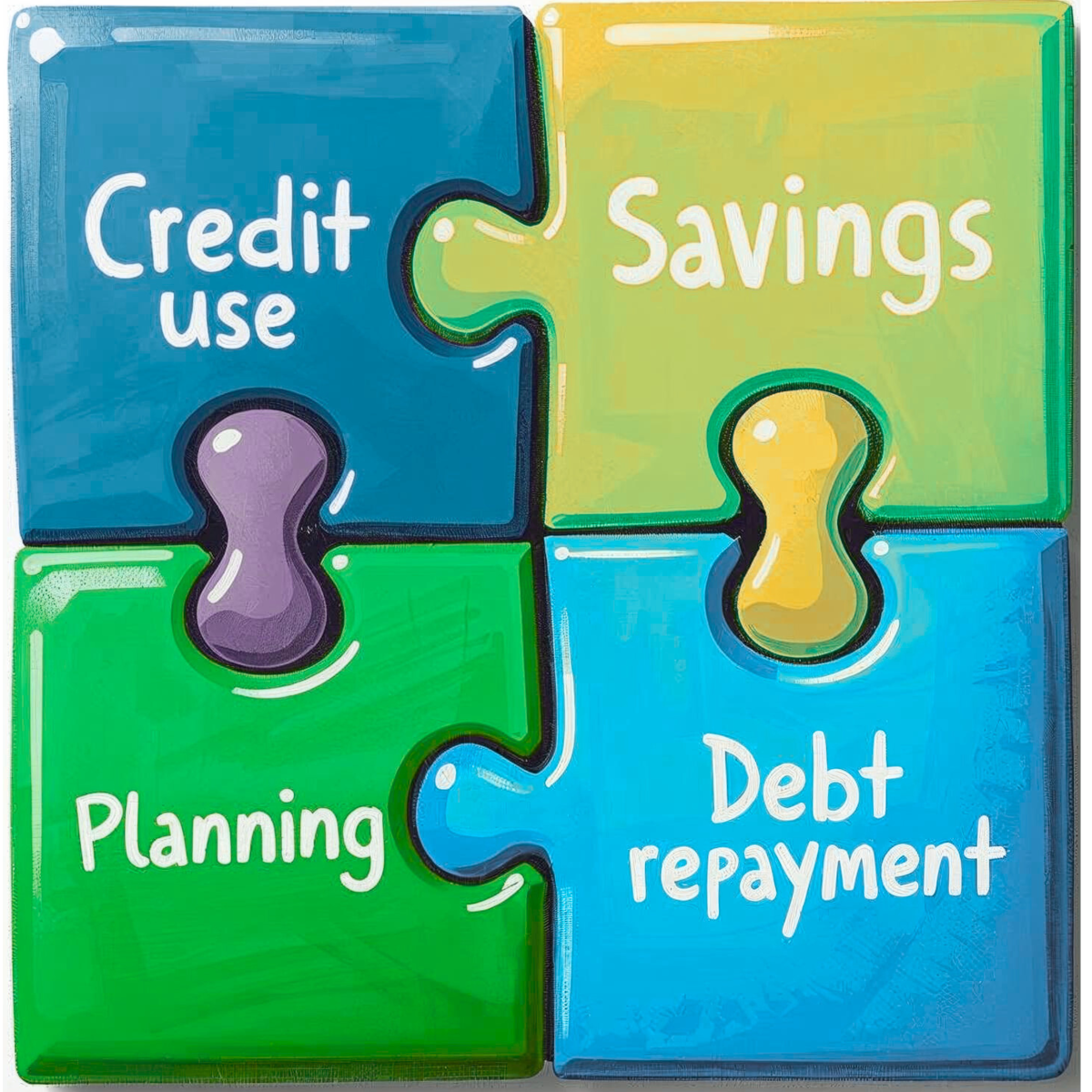Manage Your Debt - Let's Explore Your Options
GET STARTED NOWRebuilding Credit the Smart Way: Steps to a Stronger Financial Future

If you’re on a Debt Management Plan (DMP), congratulations are in order. You’ve already taken one of the most important steps toward financial health: facing debt directly and creating a strategy to pay it down. That decision alone is powerful.
But if you’ve struggled with debt in the past, you might be wondering: What does this mean for my credit? How will this plan affect me moving forward? The short answer is encouraging: a DMP may change your credit in the short term, but it also lays the foundation for long-term recovery.
How a DMP Affects Your Credit
When you enroll in a DMP, creditors may close or suspend your accounts. Because your available credit decreases, your score may dip. For many people, this feels discouraging.
But here’s the encouraging part: as you make consistent, on-time payments through your plan, your credit history begins to shift. The record of missed or late payments stops, and the amount of debt decreases. What replaces it is steady, reliable progress. Over time, this new history outweighs the old.
Credit is not permanent; it’s a moving picture. Every month you stick to your DMP, you’re creating a better picture for your financial future.
Steps Toward Rebuilding Credit
1. Stay Consistent With Payments
Payment history is the single biggest factor in your credit score. The beauty of a DMP is that it automates this part of the process for you. By continuing to make your scheduled payments on time, you’re already giving your score what it needs most: stability.
Example: Think of your DMP payment like rent or a car payment — a non-negotiable bill that comes first each month. Treating it this way ensures you always stay on track.
2. Check Your Credit Reports
You’re entitled to free reports from each of the three major credit bureaus at AnnualCreditReport.com. Reviewing your reports regularly helps you track your progress and catch errors. Currently, you can access each of your credit reports once per week, giving you plenty of opportunities to stay up to date.
Example: Set a reminder on your phone to check one report on the first Saturday of each month. This way you rotate through all three bureaus regularly without feeling overwhelmed.
3. Explore Safe Credit-Building Tools
When you’re confident in your financial footing, you may want to take small, intentional steps to strengthen your credit:
- Secured Credit Cards: These require a deposit, but they function like a regular card and report your payments to the credit bureaus.
- Credit-Builder Loans: You make payments toward a small loan, and at the end, you receive the money you’ve “saved.” It’s a safe way to build positive history.
- Authorized User Status: If someone you trust adds you to their card, their good payment history can also give your credit a lift.
Example: A secured card with a $200 limit might be used just for your cell phone bill each month. You pay it off right away, and over time that steady pattern gets reported as positive credit behavior.
The key is to only take on new credit when you feel ready to manage it confidently. Rebuilding isn’t about speed — it’s about creating steady, lasting progress.
4. Using Credit While on a DMP
Some people qualify for a traditional credit card while enrolled in a DMP, and others may already have one open. If that’s your situation, using credit responsibly can actually support your rebuilding journey. The key is to handle it with care:
- Stick to small, planned purchases that you can pay off immediately.
- Always pay the balance in full to avoid new interest charges.
- Keep balances low compared to your limit — this helps your credit score.
- Avoid relying on credit for everyday expenses; your DMP should remain your priority.
Example: Use your card once a month to buy gas, then pay it off as soon as the charge posts. This creates a clear record of responsible use without putting your progress at risk.
Handled wisely, credit can become a tool to support your progress instead of a setback. It’s all about showing lenders — and yourself — that you can use credit in a healthy, sustainable way.
5. Protect the Progress You’re Making
Once you’ve begun the rebuilding process, a few habits can keep you moving forward:
- Hold on to older accounts if possible — length of history matters.
- Avoid opening too many new accounts at once.
- If you use credit cards again, pay them in full each month so you don’t fall back into debt.
The Bigger Picture
Rebuilding credit is less about chasing a perfect score and more about creating financial confidence. It’s proof that your past doesn’t define your future. You may not see big jumps overnight, but every month of on-time payments, every correction of an error, and every smart choice adds up.
Think of it like planting a garden. You’ve already done the hard work of clearing out the weeds by enrolling in your DMP. Now, with steady care and attention, you’re planting seeds for new growth. In time, you’ll see the results — and they’ll be worth it.
Final Encouragement
Being on a DMP is more than just a payment plan. It’s a declaration that you are taking back control. Rebuilding credit is the next chapter of your story, and it’s one filled with possibility. Stay the course, celebrate the progress you’re making, and know that a stronger financial future is within reach.
You’ve already proven you can do the hard part, and now you’re building toward what’s next. Rebuilding credit isn’t about perfection — it’s about steady, consistent progress. If you’d like personalized guidance along the way, our team is here to support you and help you create a stronger financial future.
Published Aug 25, 2025.
